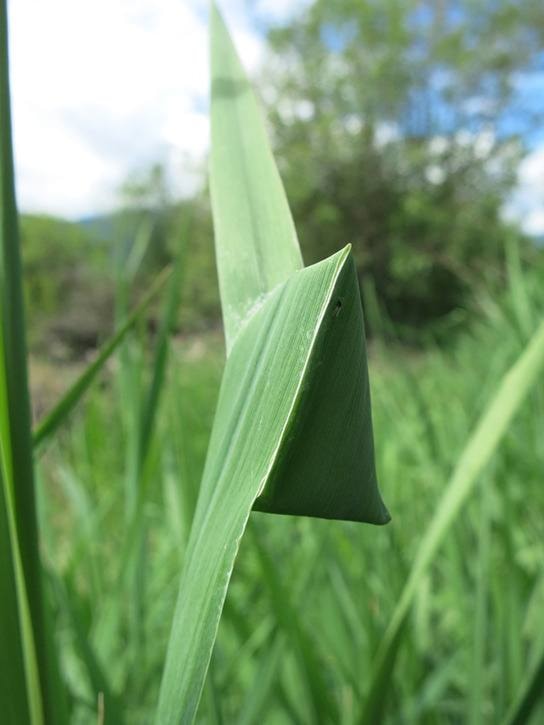Spiders are found everywhere, even riding on silken rafts in the breeze far out at sea. They are found under rocks, in hollow logs, empty cans, crevices, glaciers, snow banks, caves and root cellars from below sea level to above 10,000 feet. You may find the Johnson jumping spider on top of Akokli Mountain or the fisher spider at home, submerged in your natural pond, surviving on an air bubble.
Likewise, their varied and intricately constructed abodes and naturally sheltered spots are in many and diverse places. Burrows of ground spiders may be lined with a kind of silk, while some tunnels will have an earthen trap door. A spider home may be in dense grass, having a tubular entrance constructed of silk. Or the home of an orb-weaver may be in the corner of its web, which is attached to a twig, branch or cluster of grass. Spider residences are often attached to, or close to, where they will forage for or trap insects or spider prey. Some species construct sheets of webbing over the grass, which will glisten with dew in early morning. Other spiders rove about not constructing any shelter but just disappearing into a hole, crevice or clump of grass, or under a rock or leaf when approached.
Their nests are found, seemingly, everywhere a person can possibly investigate. Usually, a person doesn’t need to look very hard or far for a spider’s egg nest. They even seem to pop up overnight where one least suspects or wants them. Often, certain female spider species will wrap the cluster of tiny eggs in silken webbing and then attach it to some stationary object and then cover the egg sac with a sheet of webbing. When one is dismantled, some of the sticky webbing will adhere to the fingers. This material is probably a deterrent to bird predators. It might be like having sticky, roasted marshmallow all over one’s fingers.
Some spider egg nests are totally abandoned, while in some cases the female will stay by and guard the nest. Some spiders, which are less bound to a nest or shelter, natural or constructed, rove about, carrying the egg sac underneath their body or at the tail end wherever they go. One species I occasionally see has a slate blue egg sac.
Some spiders make nests totally out of the silken threads they produce from their spinnerets, while others use other materials. The “leaf-curling spider” will use a leaf and sticky threads to hold it curled, forming a capsule nest. The “grass-folding spider”, probably Clubiona riparia, bends a grass blade twice to make an egg nest. Interestingly, this spider encloses itself with the eggs. I have found these on reed canary grass.
The spider appears to pull the top section of the grass blade down, attaching it along one edge with silk, for about an inch, to the adjacent grass blade. It then bends the remaining blade back up, attaching its two edges to the unattached edges, for the same distance. The result is a three-sided capsule with tapered ends. The grass blade continues to function normally. In time, it is possible the blade expands, splitting the capsule open, perhaps about the time the eggs hatch. Or, perhaps, the adult spider, like an emerging silk moth from a cocoon, releases a substance that dissolves the webbing that holds the capsule intact, letting the grass blade spring apart.
Who told the grass-folding spider babies, when they became adults, how to make a folded-grass nest? They sure didn’t see it done. If they did it on their own, there likely wouldn’t be any grass blade-folding spiders.
Ed McMackin is a biologist by profession but a naturalist and hiker by nature. He can be reached at 250-866-5747.
